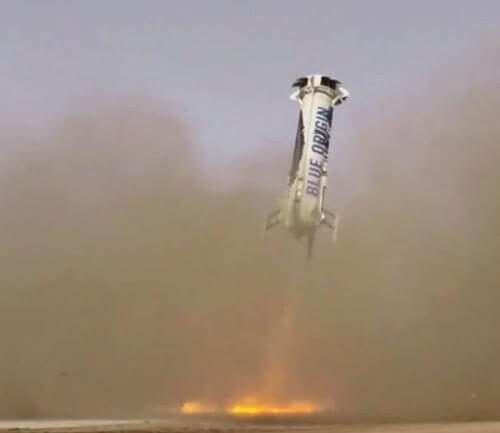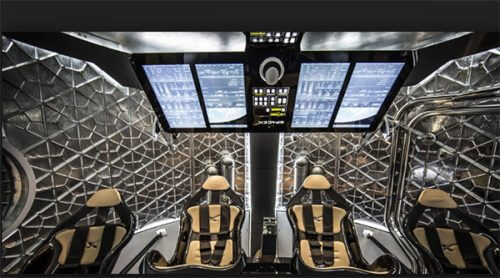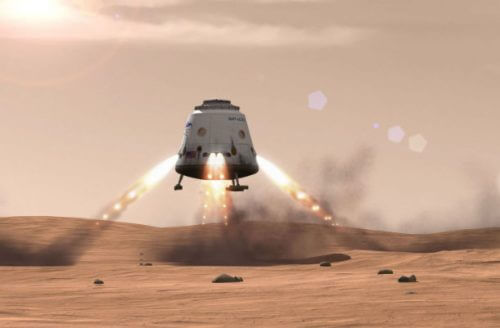What are the private space manufacturers planning for the future of space exploration?

[Translation by Dr. Nachmani Moshe]
The era of expendable launchers is coming to an end as a new group of private space companies try to apply the knowledge hoarded in Silicon Valley to advance human space exploration of the solar system. Launchers and other components that will be reusable, along with innovative propulsion technologies, promise to reduce the cost of putting next-generation space infrastructure into orbit around the Earth. Meanwhile, a number of visionaries are proposing that large-scale industrial facilities and other human activities involved in climate change be moved off Earth. In short, some of these people see space infrastructure as a way to save our planet. Some of these proposals are detailed below.
Among the most fascinating visionary plans for the future of space exploration is the plan to save the earth with the help of pioneering technologies. Jeff Bezos, founder and CEO of Amazon, also manages the space exploration startup Blue Origin, which has already managed to launch a rocket (New Shepard) and land it back to Earth unharmed. This demonstration was part of the initial steps in the welcome trend of reducing the cost of launching equipment into space. This privately held company hopes to scale up its technology over the next few years with the goal of significantly reducing the frequency of space launches. Bezos hopes that in the future it will be possible to develop a stable and efficient infrastructure for space launches intended for the transfer of heavy industry outside the earth. As part of this vision, only the inhabitants themselves and the light industries will remain on Earth. Bezos adds and says: "I think that going into space will save the earth."

Bezos, like his main competitor in commercial space exploration; Elon Musk, thinks big. Engineering inventions that originate from great ideas and multiple efforts will be required just as it was in the sixties, with the aim of developing infrastructures aimed at saving the planet. Bezos formulated one of these solutions. Musk plans to go one step further.
The first step in Musk's plan to reach the planet Mars will be to demonstrate the ability to fly astronauts to the International Space Station, for the first time ever by a privately built spacecraft, the Dragon spacecraft (the spacecraft). Below is the manned cabin of the Dragon spacecraft.
The first manned flights of SpaceX's Dragon spacecraft to the International Space Station will be able to take off at the end of 2017.

Meanwhile, Musk announced his plans to launch an unmanned spacecraft called 'Red Dragon' to the surface of Mars as early as 2018. However, all the systems required to reach the red planet have not yet been tested.

5 תגובות
I, like many others, watch movies and in the movies I see that spaceships have a kind of blue light that flings the vehicles wherever the pilots want and it seems to me that this solution, as long as it is not implemented in the aforementioned vehicles - this whole story of space flights will be and will continue to be expensive and dangerous.
I personally have a blue lamp like this, but it doesn't take me anywhere.
Sometimes she gets on my nerves to places where no human foot has ever set foot. But the bottom line - my blue lamp -> doesn't work.
In general, this whole story of gravity / spacetime / gravity should have been resolved a long time ago. Maybe instead of transferring so many billions to important (and somewhat disabled) projects, solve this problem first.
It could be cool (play on words [aha...]) if instead of wheels the car had a blue light that keeps the car 70 cm above the ground and when there is a traffic jam it rises to 250 cm (along with all kinds of other tricks) and the advantage of this (Except for the abbess) this: no more squeaks are heard. And it probably has some other benefits (like traveling to Cyprus with your draft).
Sometimes the thought comes to me that this anti-gravity trick is generally accompanied by yellow or pink light (or, for that matter, no light at all) and this in itself gives our dear scientists (since they deal with blue light) the wrong direction. So, dear friends => it might even be a bottle green light.
My suggestion, to sum up this matter is: that it is better that those involved in the matter be color blind (which reminds me that I need to put air in the wheels).
{And now I'm in front of this rather retarded nonsense and in front of the [add comment] button and I'm not at all sure if anyone uses it yes / no}
It seems to me that most of what will be mined in space will stay in space. Mainly in the asteroid belt, around Jupiter and Saturn. The robotics industry (mainly) there will mine and produce huge constructions for space stations, mirrors for telescopes, equipment for radio telescopes and for mining missions to other asteroids, and we will send there the handful of things that will still be too complicated to produce there, such as computer processors and other laboratory equipment. It would be insanely wasteful to take all this material that already has tons of potential energy to be in a useful place, and send it to Earth. We have enough iron, aluminum, iron, carbon, oxygen and hydrogen here for our needs. No need to bring all this from Vesta.
And they still haven't reached the main point. Development of a spaceship that can take off from any airport like an airplane and go anywhere in the solar system. I remember that in the 90s they talked about hybrid engines. Upon takeoff the engines will operate like jet planes. The oxygen will be drawn from the atmosphere. From a certain altitude the engines will use the oxygen found in the tanks inside the spacecraft.
Maybe there are space engineers in Israel who are ready to start a project in this direction.
And they still haven't reached the main point. Development of a spaceship that can take off from any airport like an airplane and go anywhere in the solar system. I remember that in the 90s they talked about hybrid engines. Upon takeoff the engines will operate like jet planes. The oxygen will be drawn from the atmosphere. From a certain altitude the engines will use the oxygen found in the tanks inside the spacecraft.
Maybe there are space engineers in Israel who are ready to start a project in this direction.
When more countries reach the moon like the USA, then the space age will really begin. Just as cars are produced in many countries, or there are high-tech centers outside of Silicon Valley. Elon Musk worked to make the electric car accessible when he opened his patents as open source